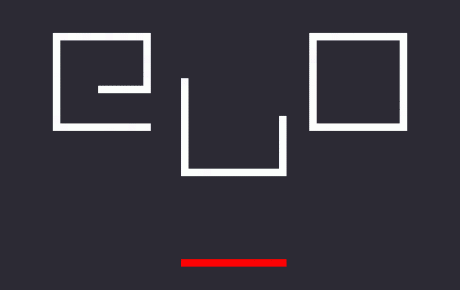"SkwarekHight Battle" is a communal invasion of Washington, D. C. by way of alternate reality technology. Using a now-deprecated application for iOS and Android, CreatAR, Jeremy Hight and Mark Skwarek staged an "epic battle" where monsters were both "attacking the capitol" and "providing commentary on" many D. C. landmarks. CreatAR offered the ability to place text, image, and animation in real space. While these spatial interventions were invisible to the naked eye, through a combination of camera, cellular data, motion tracking, and GPS technology, text and imagery could be parsed and witnessed through the virtual window of a smartphone or tablet screen.
Hight and Skwarek didn't just stage this intervention—they openly requested their audience join in as co-creators. Utilizing the CreatAR platform, users could place augmented reality objects in the D. C. arena without even having to be physically present in those spaces. This creative modality is reminiscent of the e-business concept of "crowdsourcing," but Hight and Squarek's simultaneous involvement in the project as architects, co-creators, and leaders-by-example is a key differentiating factor. "Prompted" or "facilitated crowdsourcing" may be more appropriate terms. It's worth considering "SquarekHight Battle" alongside other facilitated open projects such as "Last Call Poker" by Jane McGonigal and the "Netprov" work of Mark Marino and Rob Wittig.
It's not just a matter of dueling genres—there are many other metaphorical battles playing out in "SquarekHight Battle." The battle between public and private space in Washington D. C., for example, with ostensibly public government land shut off and sequestered, necessitating cutting-edge technology to infiltrate. Another battle plays out as the culturally-ingrained tenets of decorum and national security in these sacred government spaces are threatened by the cartoon violence and disarming, poetic language of the alternate reality overlay. There are even battles in the technology itself, between real and virtual objects and spaces, between users with potentially-different virtual tableaus in mind, even between platforms (CreatAR recommended iOS because Android users apparently saw objects as much larger than they were intended to appear).
The CreatAR platform itself highlights an ongoing battle by way of accessibility. By making augmented reality accessible to an audience that might not know how to create or experience it otherwise, Hight and Skwarek draw a distinction between the open, accessible play available in "SquarekHight Battle" and the staid, for-profit augmented reality concepts being teased and tested by tech companies at the time. While the patchwork, flattened, JPEG and GIF-infused Net Art aesthetic of "SquarekHight Battle" might be related to the technical limitations of the platform, it nonetheless feels deliberate. Much like Net Art works to debase the pristine, inaccessible aesthetic of commercial software with lo-fi anachronism and messy, poetic maximalism, Hight and Skwarek ring in the advent of augmented reality with an open, playfully transgressive intervention that deliberately subverts the techno-utopian overtures of its form.







